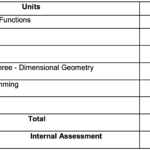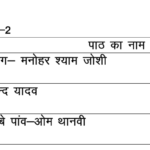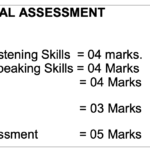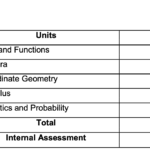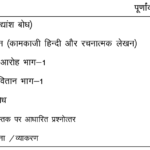The UK Board Class 12th Chemistry Syllabus for 2024-2025, under the Uttarakhand Board of School Education (UBSE), has been structured to provide a comprehensive understanding of both theoretical and practical aspects of chemistry. This syllabus is designed to equip students with a solid foundation in the subject, preparing them for higher education and competitive exams.
Check UK board class 12 chemistry syllabus along with detailed 12th (twelfth) chemistry board examination pattern with list of practicals and activities.
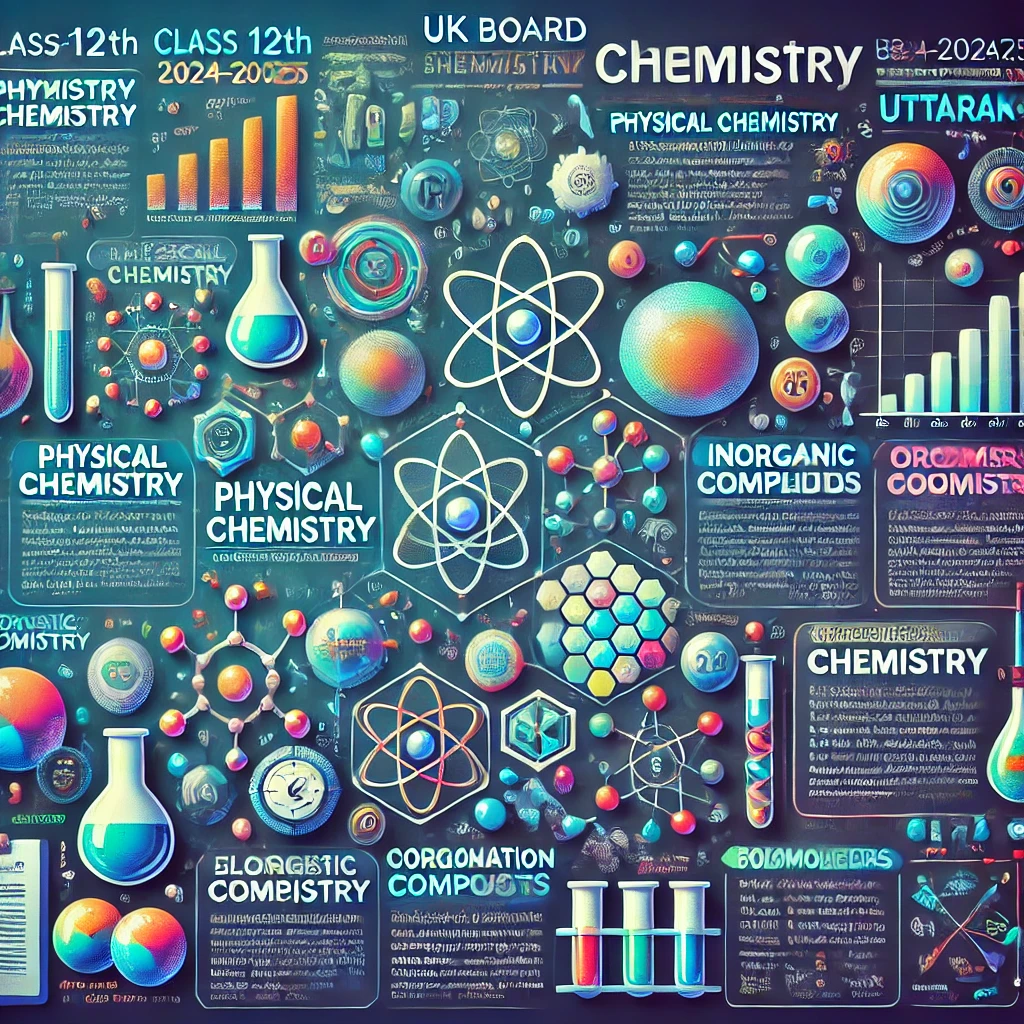
Contents
UK Board Class 12th Chemistry Syllabus 2024-2025
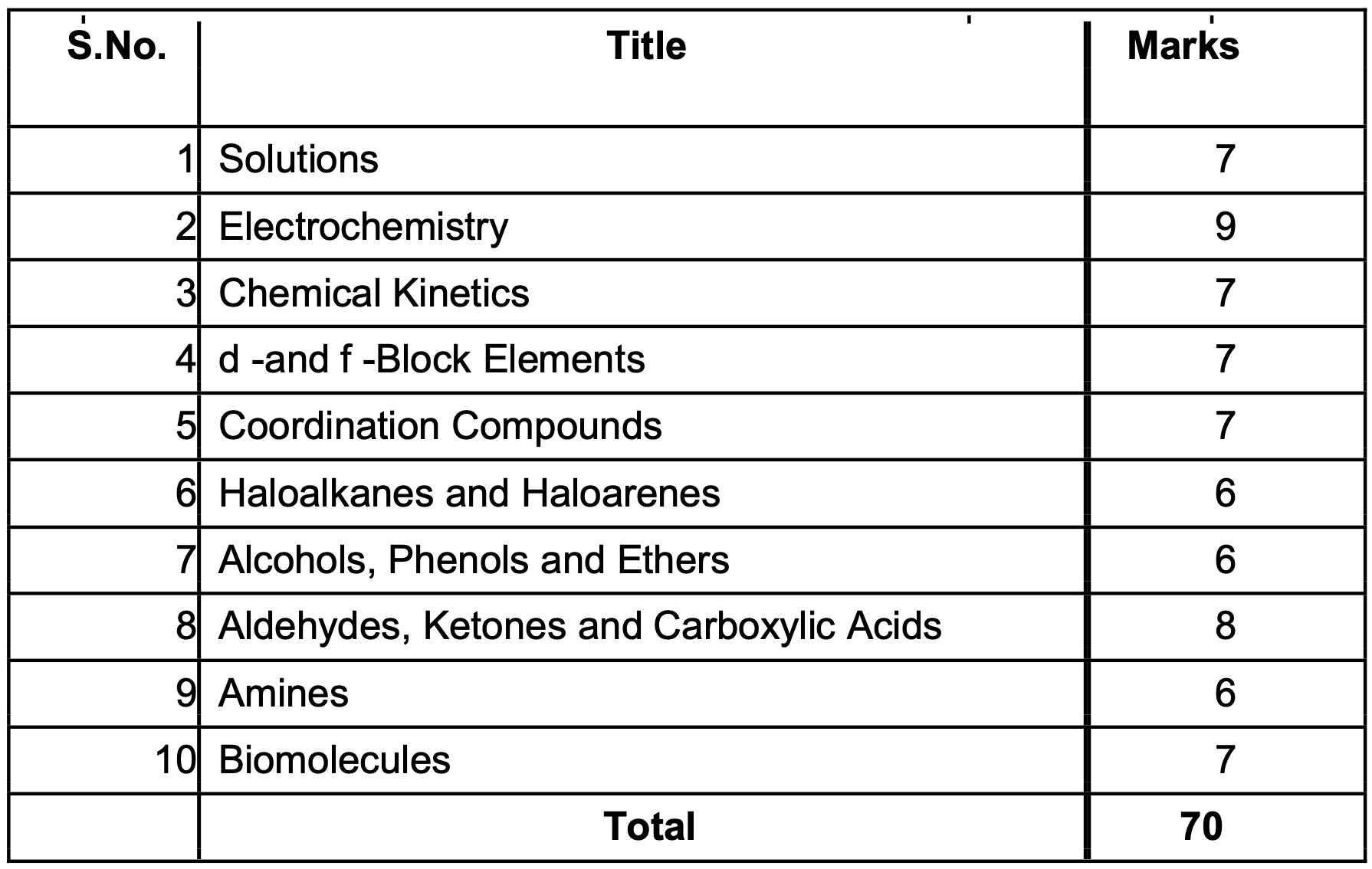
Unit 1 : Solutions
Types of solutions, expression of concentration of solutions of solids in liquids, solubility of gases in liquids, solid solutions, Raoult’s law, colligative properties – relative lowering of vapour pressure, elevation of boiling point, depression of freezing point, osmotic pressure, determination of molecular masses using colligative properties, abnormal molecular mass, Van’t Hoff factor.
Unit 2: Electrochemistry
Redox reactions, EMF of a cell, standard electrode potential, Nernst equation and its application to chemical cells, Relation between Gibbs energy change and EMF of a cell, conductance in electrolytic solutions, specific and molar conductivity, variations of conductivity with concentration, Kohlrausch’s Law, electrolysis and law of electrolysis (elementary idea), dry cell-electrolytic cells and Galvanic cells, lead accumulator, fuel cells, corrosion.
Unit 3: Chemical Kinetics
Rate of a reaction (Average and instantaneous), factors affecting rate of reaction: concentration, temperature, catalyst; order and molecularity of a reaction, rate law and specific rate constant, integrated rate equations and half-life (only for zero and first order reactions), concept of collision theory (elementary idea, no mathematical treatment), activation energy, Arrhenius equation.
Unit 4: d & f Block Elements
- General introduction, electronic configuration, occurrence and characteristics of transition metals, general trends in properties of the first row transition metals – metallic character, ionization enthalpy, oxidation states, ionic radii, colour, catalytic property, magnetic properties, interstitial compounds, alloy formation, preparation and properties of K2Cr2O7 and KMnO4.
- Lanthanoids – Electronic configuration, oxidation states, chemical reactivity and lanthanoid contraction and its consequences.
- Actinoids – Electronic configuration, oxidation states and comparison with lanthanoids.
Unit 5: Coordination Compounds
Coordination compounds – Introduction, ligands, coordination number, colour, magnetic properties and shapes, IUPAC nomenclature of mononuclear coordination compounds. Bonding, Werner’s theory, VBT, and CFT; structure and stereoisomerism, importance of coordination compounds (in qualitative analysis, extraction of metals and biological system).
Unit 6: Haloalkanes and Haloarenes.
- Haloalkanes: Nomenclature, nature of C–X bond, physical and chemical properties, optical
rotation mechanism of substitution reactions. - Haloarenes: Nature of C–X bond, substitution reactions (Directive influence of halogen in monosubstituted compounds only).
- Uses and environmental effects of – dichloromethane, trichloromethane, tetrachloromethane, iodoform, freons, DDT.
Unit 7: Alcohols, Phenols and Ethers
- Alcohols: Nomenclature, methods of preparation, physical and chemical properties (of primary alcohols only), identification of primary, secondary and tertiary alcohols, mechanism of dehydration, uses with special reference to methanol and ethanol.
- Phenols: Nomenclature, methods of preparation, physical and chemical properties, acidic nature of phenol, electrophillic substitution reactions, uses of phenols.
- Ethers: Nomenclature, methods of preparation, physical and chemical properties, uses.
Unit 8: Aldehydes, Ketones and Carboxylic Acids
- Aldehydes and Ketones: Nomenclature, nature of carbonyl group, methods of preparation, physical and chemical properties, mechanism of nucleophilic addition, reactivity of alpha hydrogen in aldehydes, uses.
- Carboxylic Acids: Nomenclature, acidic nature, methods of preparation, physical and chemical properties; uses.
Unit 9: Amines
- Amines: Nomenclature, classification, structure, methods of preparation, physical and chemical properties, uses, identification of primary, secondary and tertiary amines.
- Diazonium salts: Preparation, chemical reactions and importance in synthetic organic chemistry.
Unit 10: Biomolecules
- Carbohydrates – Classification (aldoses and ketoses), monosaccahrides (glucose and fructose), D-L configuration oligosaccharides (sucrose, lactose, maltose), polysaccharides (starch, cellulose, glycogen); Importance of carbohydrates.
- Proteins -Elementary idea of – amino acids, peptide bond, polypeptides, proteins, structure of proteins – primary, secondary, tertiary structure and quaternary structures (qualitative idea only), denaturation of proteins; enzymes. Hormones – Elementary idea excluding structure.
- Vitamins – Classification and functions. Nucleic Acids: DNA and RNA.
Uttarakhand Board 12th Chemistry Practical Syllabus 2024-2025
Surface Chemistry
- Preparation of one lyophilic and one lyophobic sol Lyophilic sol – starch, egg albumin and gum
- Lyophobic sol – aluminium hydroxide, ferric hydroxide, arsenous sulphide.
- Dialysis of sol-prepared in (a) above.
- Study of the role of emulsifying agents in stabilizing the emulsion of different oils.
Chemical Kinetics
- Effect of concentration and temperature on the rate of reaction between Sodium Thiosulphate and Hydrochloric acid.
- Study of reaction rates of any one of the following:
- Reaction of Iodide ion with Hydrogen Peroxide at room temperature using different concentration of Iodide ions.
- Reaction between Potassium Iodate, (KIO3) and Sodium Sulphite: (Na2SO3) using starch solution as indicator (clock reaction).
Thermochemistry (Any one of the following experiments)
- Enthalpy of dissolution of Copper Sulphate or Potassium Nitrate.
- Enthalpy of neutralisation of strong acid (HCI) and strong base (NaOH).
- Determination of enthalpy change during interaction (Hydrogen bond formation) between Acetone and Chloroform.
Electrochemistry:- Variation of cell potential in Zn/Zn2+|| Cu2+/Cu with change in concentration of electrolytes (CuSO4 or ZnSO4) at room temperature.
Chromatography
- Separation of pigments from extracts of leaves and flowers by paper chromatography and determination of Rf values.
- Separation of constituents present in an inorganic mixture containing two cations only (constituents having large difference in Rf values to be provided).
Preparation of Inorganic Compounds: Preparation of double salt of Ferrous Ammonium Sulphate or Potash Alum. Preparation of Potassium Ferric Oxalate.
Preparation of Organic Compounds: Preparation of any one of the following compounds i) Acetanilide ii) Di -benzal Acetone iii) p-Nitroacetanilide iv) Aniline yellow or 2 – Naphthol
Anilinedye.
Tests for the functional groups present in organic compounds: Unsaturation, alcoholic, phenolic, aldehydic, ketonic, carboxylic and amino (Primary) groups.
- Characteristic tests of carbohydrates, fats and proteins in pure samples and their detection in given foodstuffs.
- Determination of concentration/ molarity of KMnO4 solution by titrating it against a standard solution of: Oxalic acid, Ferrous Ammonium Sulphate. (Students will be required to prepare standard solutions by weighing themselves).
Qualitative analysis Determination of one cation and one anion in a given salt:-
- Cation : Pb2+, Cu2+ As3+, Al3+, Fe3+, Mn2+, Zn2+, Cu2+, Ni2+, Ca2+, Sr2+, Ba2+, Mg2+, NH4+
- Anions: (CO3)2-, S2-, (SO3)2-, (NO2)-, (SO4)2-, Cl-, Br-, I-, PO3-4, (C2O4)2-, CH3COO-,NO3- (Note: Insoluble salts excluded)
UK BOARD Class 12 Chemistry Projects
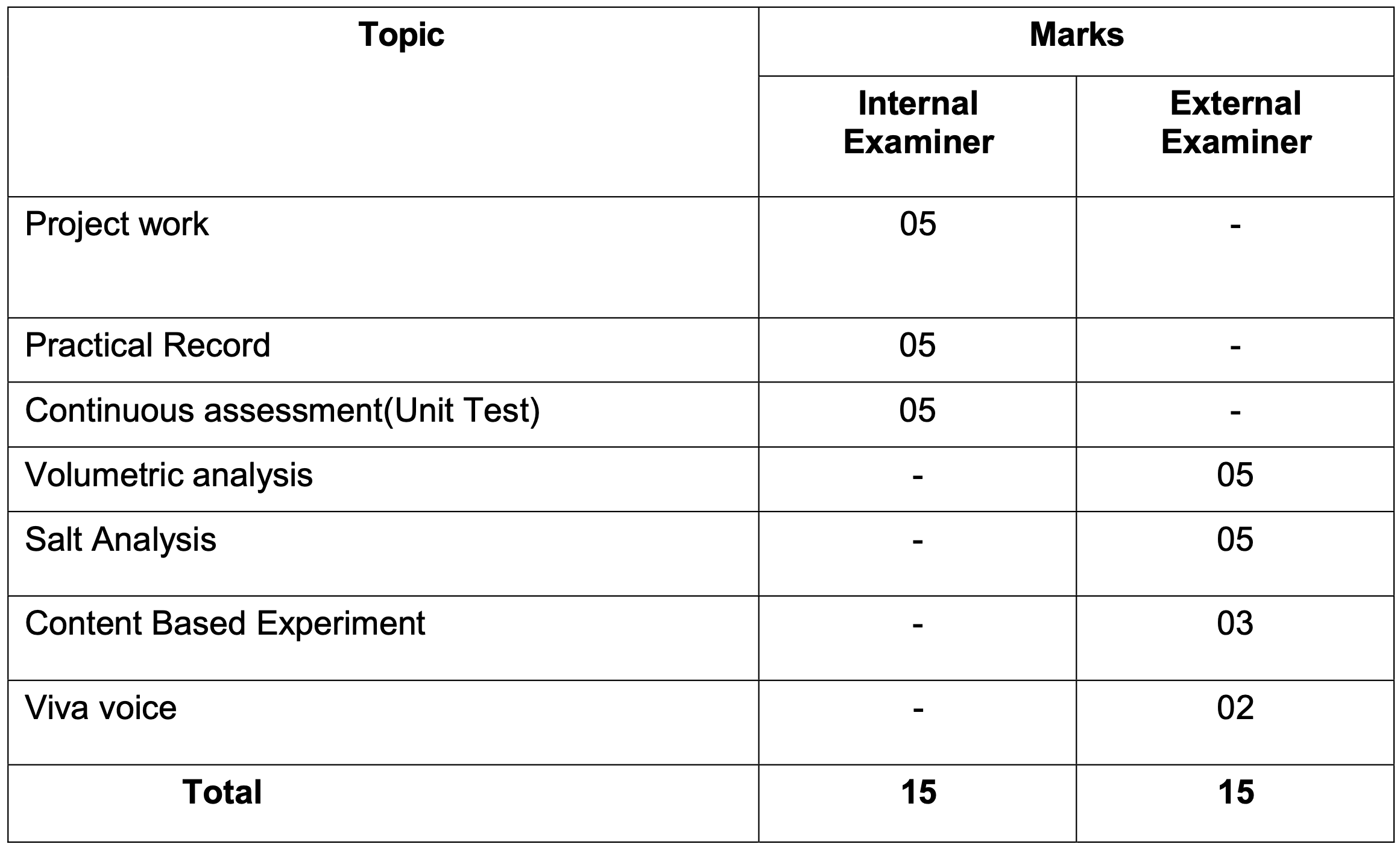
Scientific investigations involving laboratory testing and collecting information from other sources
few suggested Projects:-
- Study of the presence of oxalate ions in guava fruit at different stages of ripening.
Study of quantity of casein present in different samples of milk. - Preparation of soybean milk and its comparison with the natural milk with respect to curd formation, effect of temperature, etc.
- Study of the effect of Potassium Bisulphate as food preservative under various conditions (temperature, concentration, time, etc.)
- Study of digestion of starch by salivary amylase and effect of pH and temperature on it.
- Comparative study of the rate of fermentation of following materials: wheat flour, gram flour, potato juice, carrot juice, etc.
- Extraction of essential oils present in Saunf (aniseed), Ajwain (carum), Illaichi (cardamom).
Study of common food adulterants in fat, oil, butter, sugar, turmeric power, chilli powder and pepper.
More Links For Uttarakhand UBSE Class 11th Syllabus 2024-25
| Subject Name (12th) | Subject Code | Syllabus Link |
| 12th Maths | 128 | CLICK HERE |
| 12th Physics | 129 | CLICK HERE |
| 12th Chemistry | 130 | CLICK HERE |
| 12th Biology | 131 | CLICK HERE |
| 12th Hindi | 101 | CLICK HERE |
| 12th English | 103 | CLICK HERE |
| Latest UBSE Updates | UBSE | CLICK HERE |
| UK Board Class 12th All Subjects Syllabus |
All Subjects | CLICK HERE |
| Official Website | UK Board | CLICK HERE |
Important FAQs
What is the weightage of practical exams in Class 12 Chemistry?
The practical exam carries 30 marks and includes experiments like titrations, preparation of organic compounds, and qualitative analysis. These practicals help students develop essential laboratory skills.
How is the Class 12 Chemistry theory paper structured in the UK Board exams?
The theory paper is of 70 marks and consists of objective-type questions, short answers, and long-answer questions. The paper tests students on conceptual knowledge, problem-solving skills, and application-based understanding.
Where can students find the official syllabus for UK Board Class 12 Chemistry 2024-2025?
The official syllabus is available on the UBSE Uttarakhand website and direct links to view/download syllabus is given on this page, also, students can also be obtained from schools or study guides. Teachers usually provide students with a detailed breakdown of the syllabus in class.


